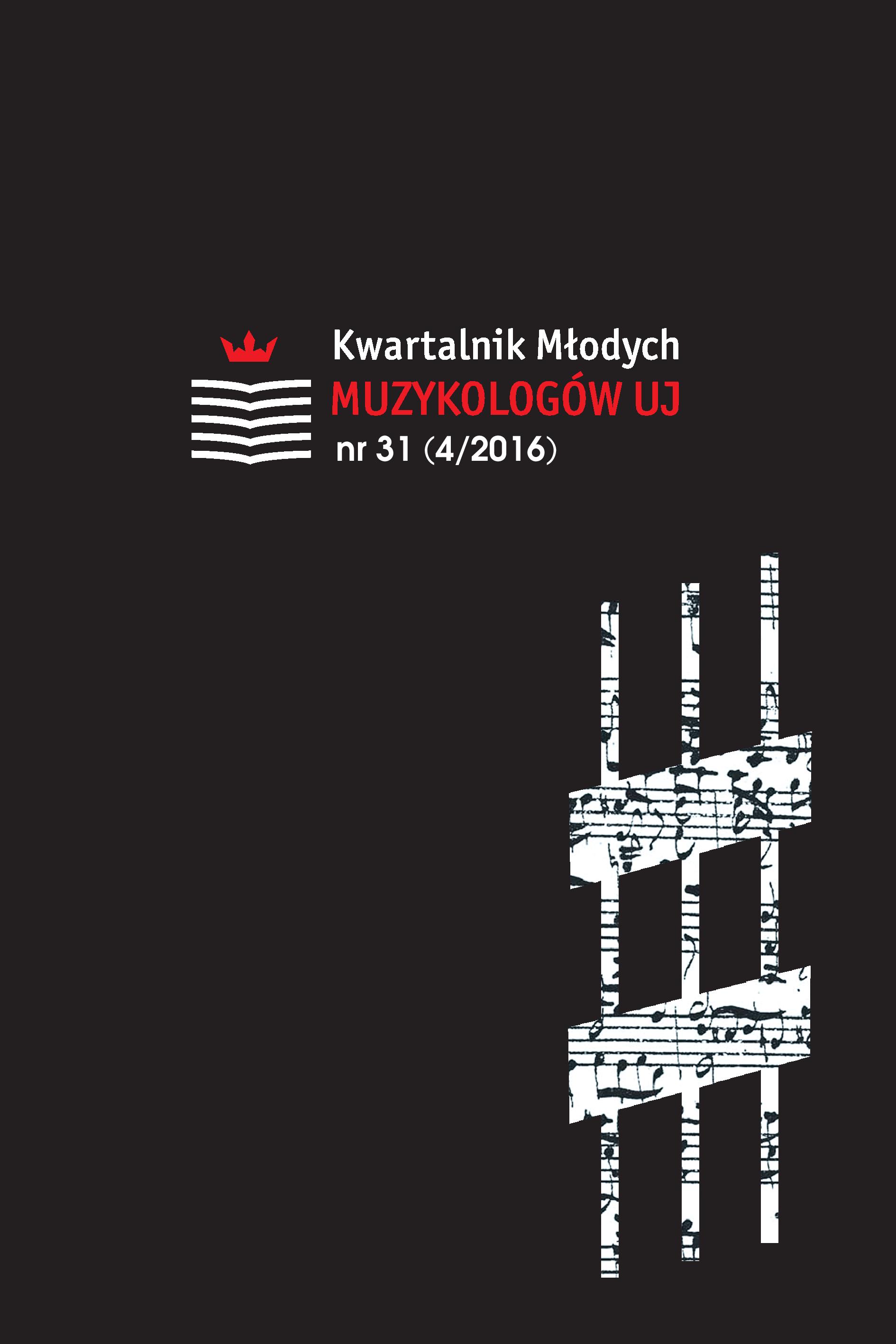Dwa Źródła Aretuzy. Semantyka, literackie właściwości i funkcjonowanie aspektów kompozycji Karola Szymanowskiego w sonecie Jarosława Iwaszkiewicza
Two Fountains of Arethusa. Semantics, literary qualities, andfunctioning of aspects of Karol Szymanowski’s composition in Jarosław Iwaszkiewicz’s sonnet
Author(s): Łukasz KrajSubject(s): History, Language and Literature Studies, Fine Arts / Performing Arts, Cultural history, Music, Studies of Literature, Social history, Recent History (1900 till today), Comparative Study of Literature, Polish Literature, Pre-WW I & WW I (1900 -1919), Interwar Period (1920 - 1939), Theory of Literature
Published by: Koło Naukowe Studentów Muzykologii UJ
Keywords: Karol Szymanowski; Jarosław Iwaszkiewicz; semiotics; intertextuality; comparison of arts
Summary/Abstract: The purpose of this article is to define the possible meanings and connotations of musical compositions and their conversion into the lingual substance of poetry. Since the issue is varying internally and always needs particular examples, the undertaken analysis concerns two pieces of art: Fountain of Arethusa by a Polish composer Karol Szymanowski and a sonnet of the same title written by his friend and relative, writer Jarosław Iwaszkiewicz. Firstly, the matter of literary title and its associations is compared in both pieces, which leads to conclusion that while the name of composition generates loose and imprecise connotations, literature requires more specification, nonetheless both the composer and the poet understand mythical subject alike and reception of the work of the latter is based on emotional and semantic qualities similar to those included in the composition. Then, the subject of musical genre is depicted, with emphasis placed on literary connotations and their implications in the process of transcription of music into words. As the poet uses sonnet, which apparently has got poor connections to music, the motives of such choice are enumerated, including significance in European culture and interior dichotomy, both of which one can find in Szymanowski’s work. Further, the article describes relations between music character indications in musical score and particular lexemes in the poem. Musical work can exist in literature in many ways, first of which is being a theme of objective or subjective description. Such illustration of music in the poem is analysed. Then the euphonious and rhythmic features of the text are described in order to prove that music exists in the sonnet in its sound as well as being a scheme which is reinterpreted and imitated by the writer. The analysis shows that although one cannot translate musical matter into words, it is impossible to ignore many intersemiotic correlations between music and literature. Every example of such coexistence – either on the ground of semantics or form – must be studied individually.
Journal: Kwartalnik Młodych Muzykologów UJ
- Issue Year: 2016
- Issue No: 04 (31)
- Page Range: 57-76
- Page Count: 20
- Language: Polish

